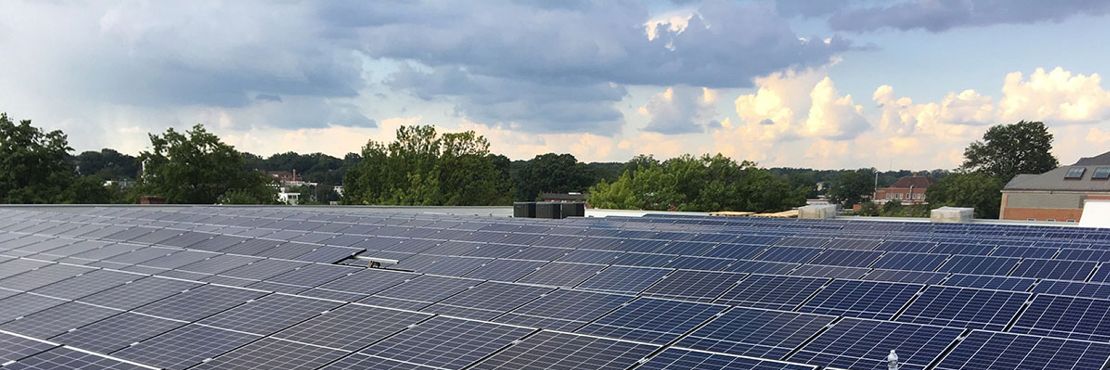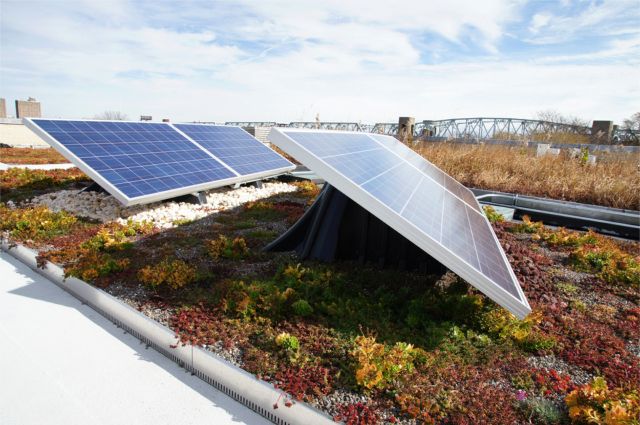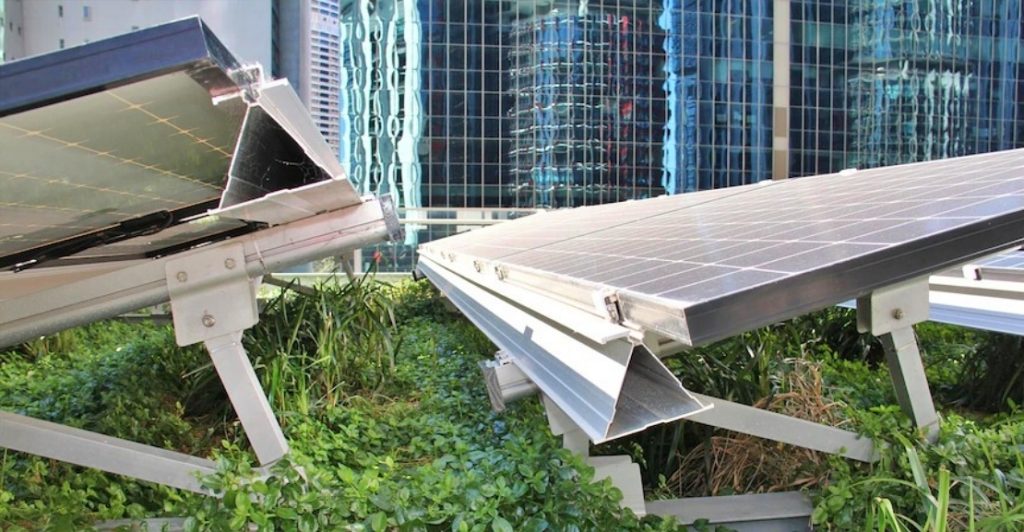Completed 133.980 kW Solar Integrated Green Roof at Taylor St NW, northeast Washington, DC.
All Images by Solar Energy Systems Unless Otherwise Noted
Developer’s Success Story
For the newly-finished Taylor Street Storage facility in northeast Washington, DC a 17,500 square foot green roof with fully integrated solar panel array showcases a value-stacked project providing both a cost-effective solution to stormwater management and elegant design … all without forfeiting the solar panels that generate income via federal tax incentives and DC’s superb solar production-based financial incentives.
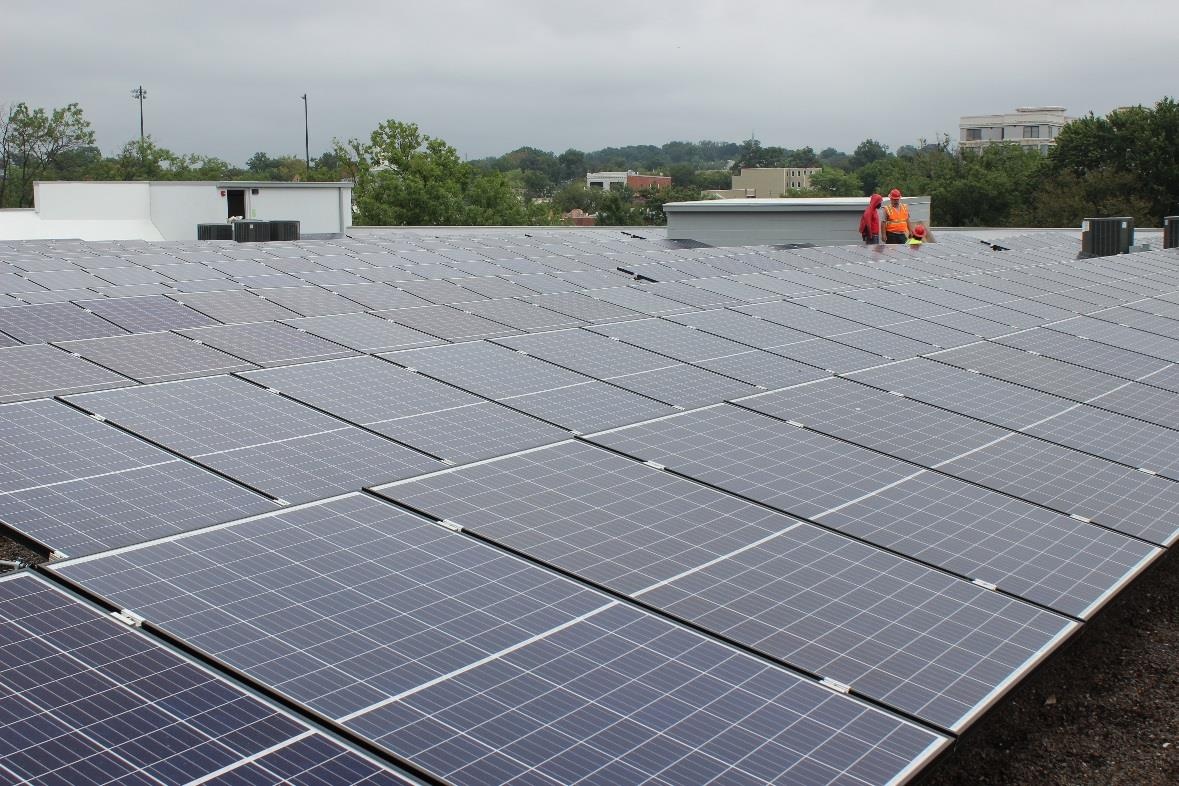
With over three million square feet of green roofs in Washington, DC and 50 MW+ of solar installations, the City is no stranger to either technology. However, the integration of both on the same roof is less common, despite the symbiotic relationship between the two offering a number of advantages.
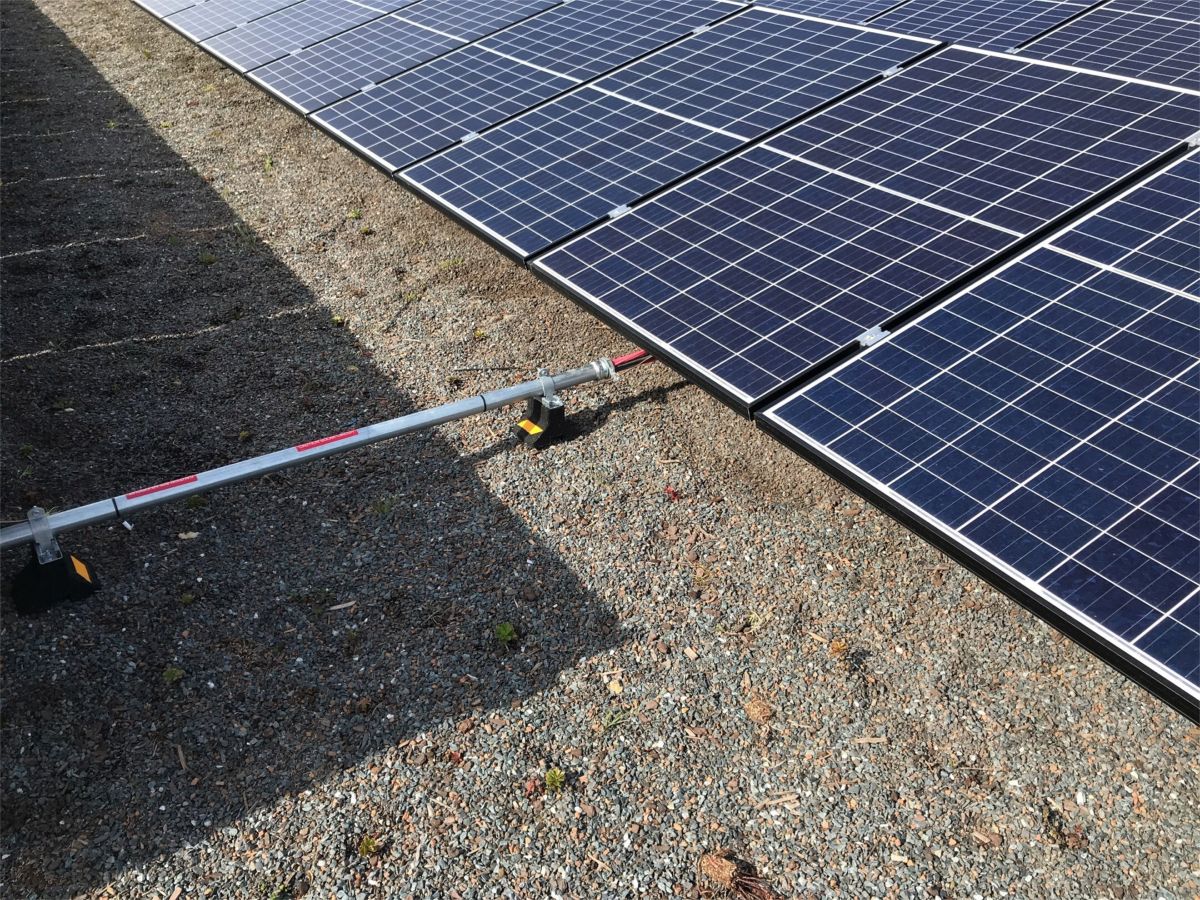
Newly planted Sedum plugs on the solar green roof.
Stormwater Management
Approval for a commercial building permit in Washington, DC must include a stormwater management plan as defined by DC’s Department of Energy and the Environment (DOEE). For Taylor Street, the Solar Energy Services, Inc. (SES) development team could have chosen between:
- Lost parking spaces to house costly underground containers for capturing and storing runoff;
- Payment of ever-increasing stormwater management fees;
- Implementation of a multi-layered green roof to treat 100% of the rainfall obligation with a perennial, Sedum based plant surface – as per DOEE requirements.
The green roof offered a cost effective stormwater management solution that required no additions or demo’s to the existing structure.
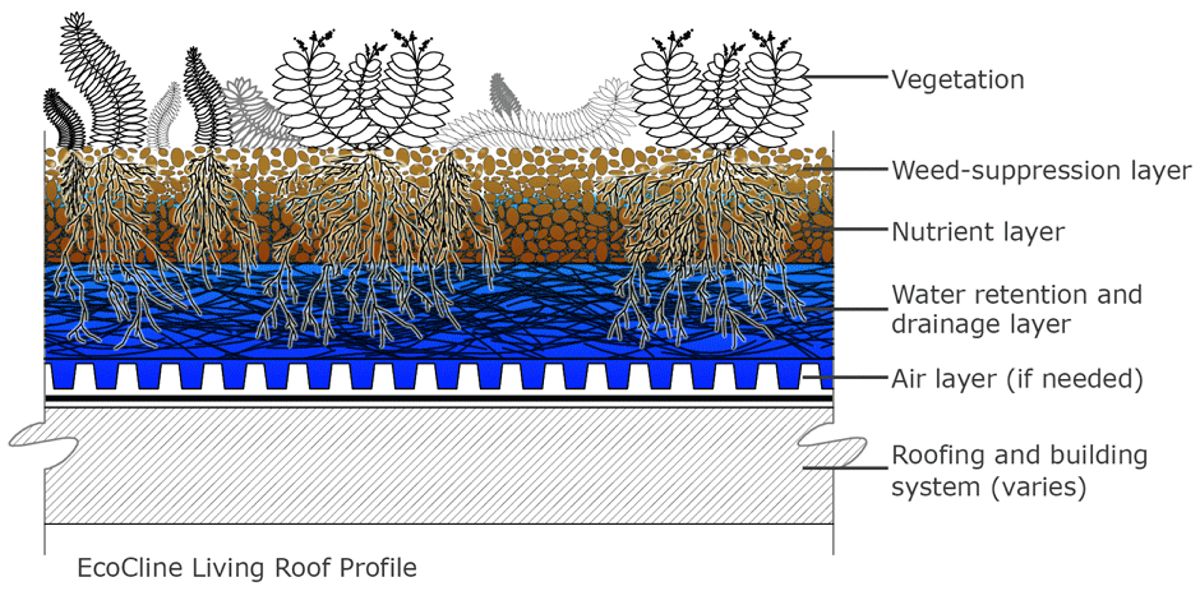
Image: Furbish
Solar Integrated Green Roofs
Most savvy developers realize that an empty roof in Washington, DC is money left on the table. With the best solar financial incentives in the USA, the payback is rapid followed by years of production-based paydays. Small wonder that the development team at Taylor Street were interested if – and how – a solar array could integrate with a green roof. (One of the members of the development team, Furbish, designs, supplies, installs, and maintains green roofs and walls in the U.S.)
And the good news is not only does the solar system seamlessly integrate with the green roof, but the relationship is one of symbiosis and cost-effectiveness. Here’s why:
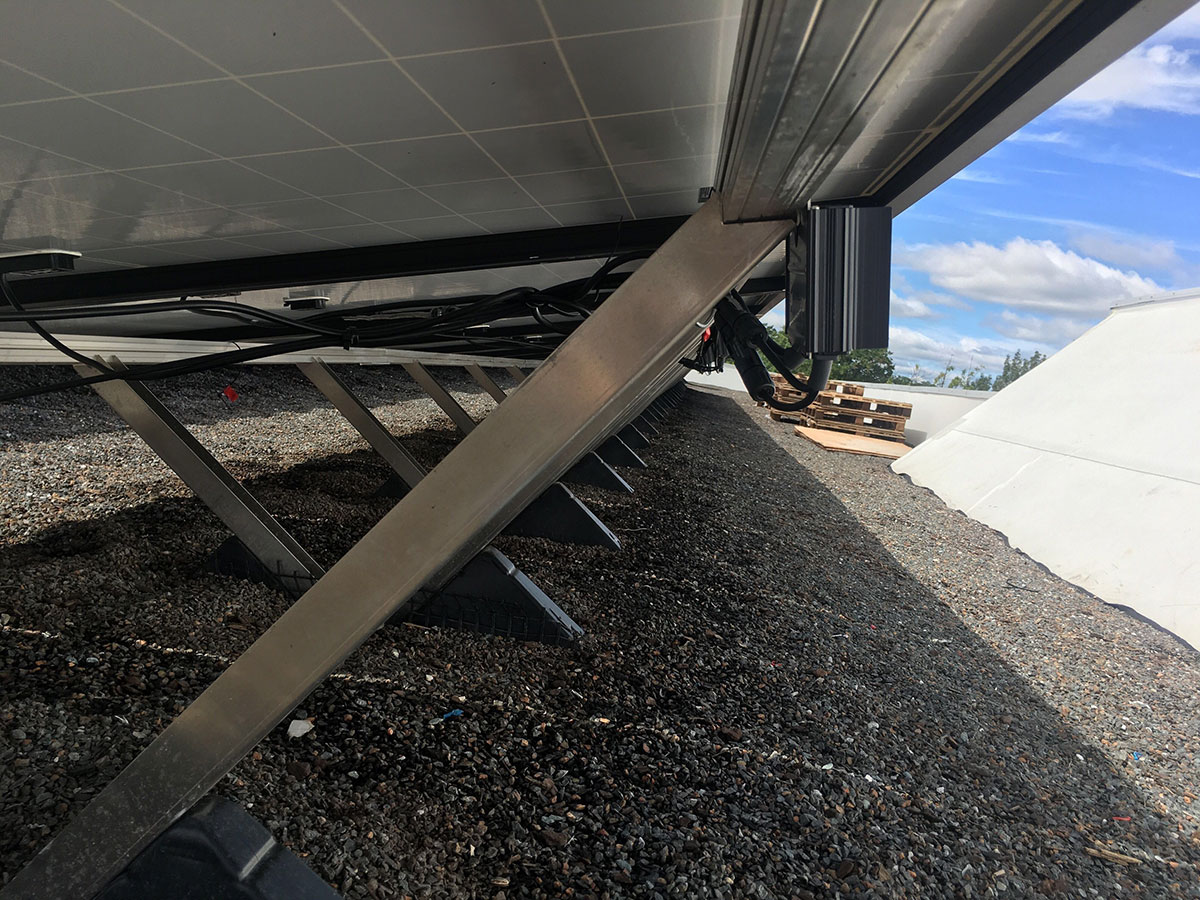
BALLAST. Most solar systems installed on DC’s commercial flat roof areas are ballasted; an assortment of concrete blocks, along with the weight of the solar panels and racking, is engineered to hold down the weight of the array with minimal or no penetrations to the roof membrane.
With close to 35 PSF of weight, a green roof more than provides this ballast negating the need for concrete blocks or supplemental attachments. This is worth mentioning as the green roof is now a fully engineered component of the solar system bringing the question of tax credit eligibility into play. Is the green roof, or portion of, now eligible for the 30% federal solar tax credit, also known as the investment tax credit (ITC)? It’s certainly worth conferring with a tax adviser.

Image: Furbish
CREATION OF A MICROCLIMATE: Furbish designs their perennially healthy green roofs with a wide palette of Sedum species. These drought-resistant succulents require little maintenance and have varying requirements for daily sunlight – from full-sun to all-shade. Contrary to first impressions, the intermittent shading and weather protection provided by the solar panels provide a microclimate highly conducive to the plants underneath, in between, and around the solar arrays.
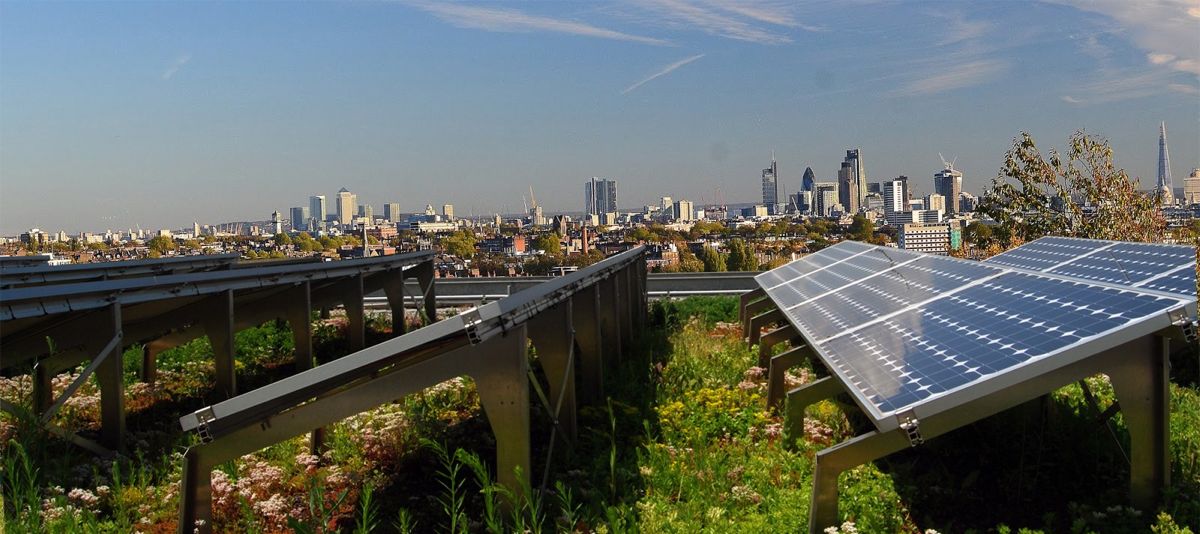
Established example of a solar integrated green roof. Image: Greenroofs.com via Medium
DESIGN: Most ballasted solar systems have ample aisles between each row of solar panels insuring that each solar panel is optimized and avoiding shading from the panel row in front.
Solar panels can also be tilted anywhere between 5 and 35 degrees. This is adjusted to account for shading, panel count, and orientation considerations. This flexibility of design was helpful for integration the green roof. Aisle spacing, solar panel size and tilt, were designed with the green roof in mind – not only as it relates to healthy plants but also for annual maintenance access requirements.
Challenges
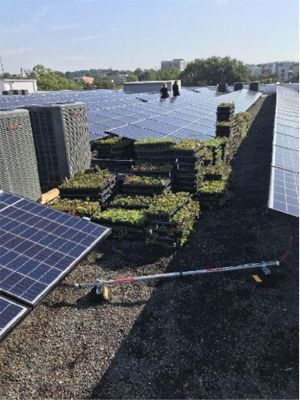 Solar integrated green roofs are not as common as their singular counterparts. And, it’s fair to say this project did not come without some challenges.
Solar integrated green roofs are not as common as their singular counterparts. And, it’s fair to say this project did not come without some challenges.
At left you see trays of sedums awaiting fall planting at Taylor Street Storage, October 2018. Image: David Gorman of Lock 7 Development
DOEE Design Standards
The Department of Energy and Environment is responsible for DC’s Stormwater Management and insuring all DC buildings comply with runoff standards. The burden was on SES and Furbish to ensure that the solar arrays were not going to impede the ability of the plants to thrive and provide the necessary water retention requirements.
The design and permitting side of the project, insofar as panel tilt, aisle spacing and racking integration, were designed in collaboration with the DOEE.
Installation Timelines
Furbish Company is a green roof specialist, Solar Energy Services, Inc. is a solar specialist.
Integrating these technologies took heightened coordination between our installation teams, mostly in terms of labor efficiency, communication and timeliness. The latter was particularly stringent as the Certificate of Occupancy, required to meet the developer’s lease requirements, was contingent upon the completion of the green roof which now included solar racking, wiring and panel installations.
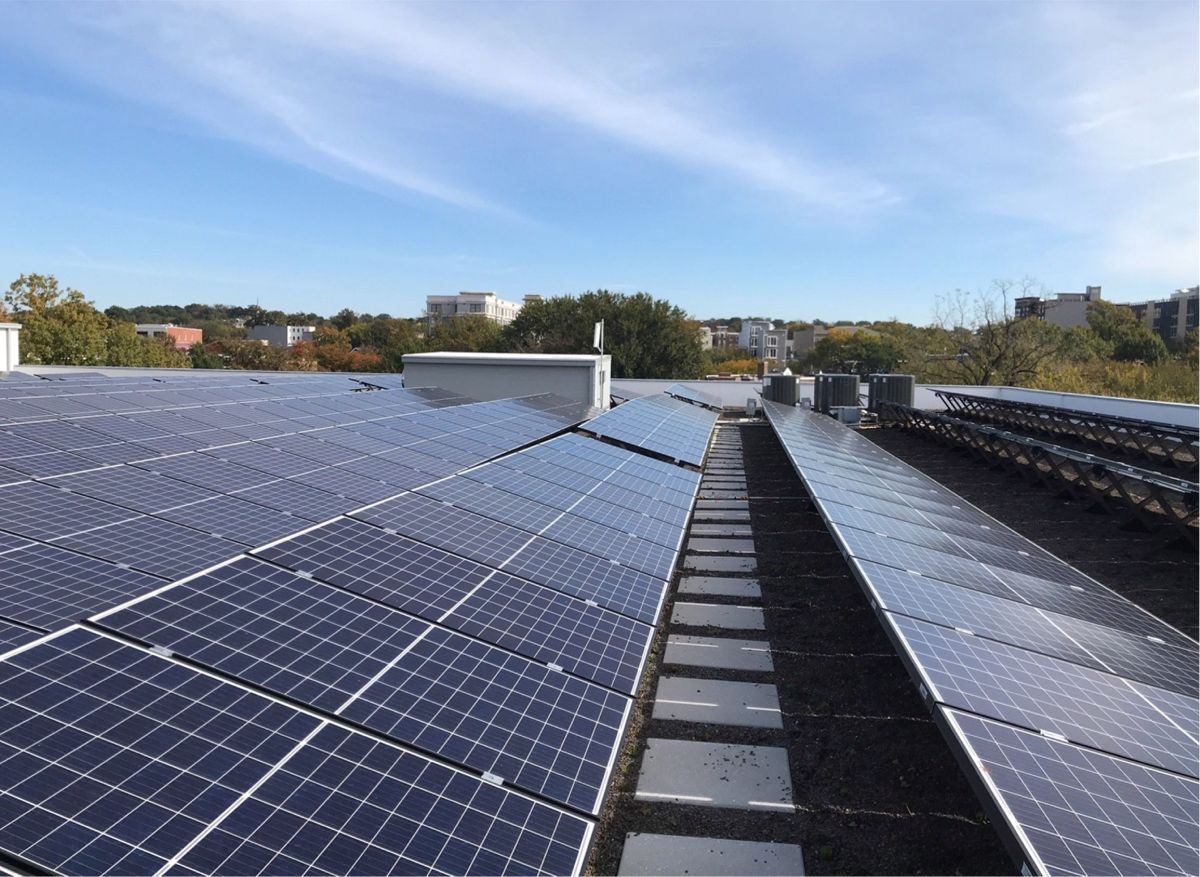
Throw in some PEPCO (Potomac Electric Power Company) permission to operate challenges related to the solar portion, and the pressure was on. This is where PEPCO upgrades the onsite utility meter so that it can now build a credit on days when the solar is generating more than the building is consuming. Due to a monumental increase in solar adoption throughout DC, we had to wait for several weeks before the system was live and able to generate high-value SRECs.
“An SREC is a credit you can earn from your state for energy produced by your home solar system. You can earn a single SREC when your solar panel system produces 1,000 kWhs of electricity.” ~ Solar Power Authority
The Taylor Street Storage project came with some unusual PEPCO interconnection timing challenges at the end, ironically not related to the green roof aspect of the application. Nonetheless, this system is now outputting electricity like gangbusters.
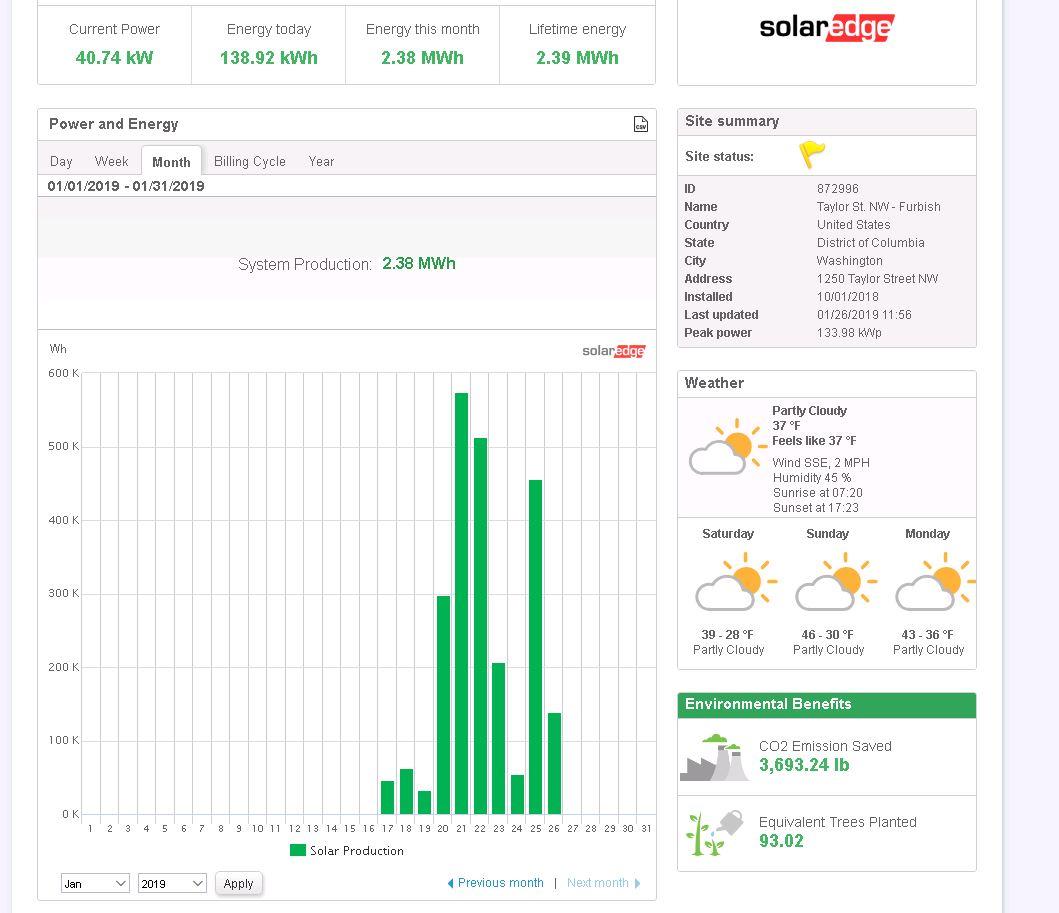
Above: The Taylor Street solar production in January, 2019. Below: The solar production so far in March.
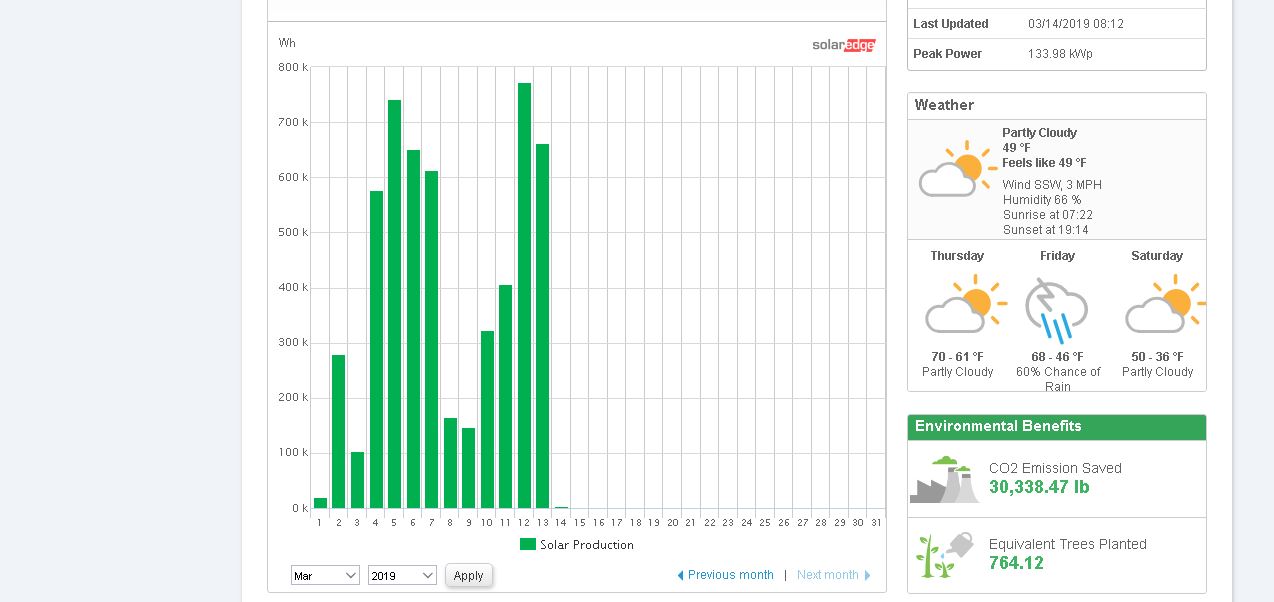
All’s well that ends well.
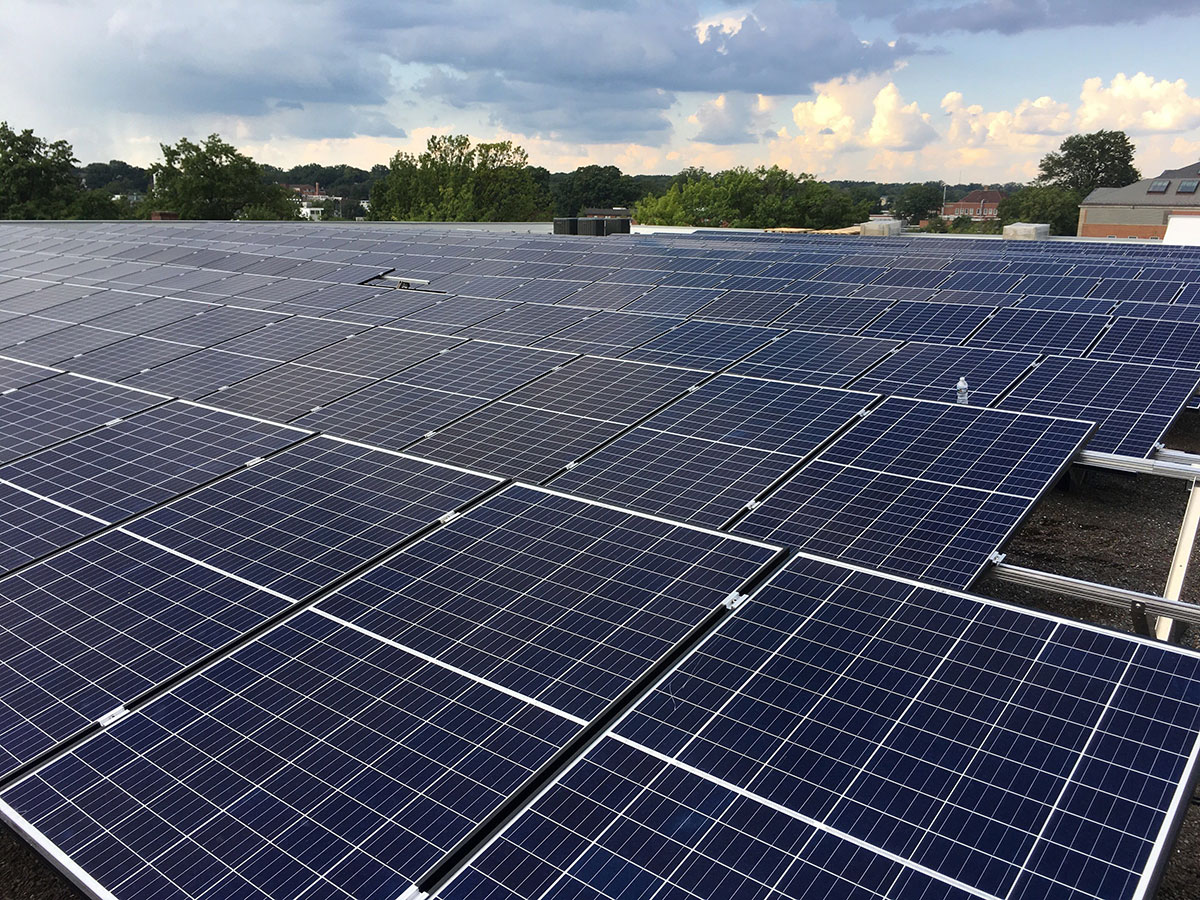
The newly installed Taylor Street solar integrated green roof in late October, 2018.
~ Lisa Walsh
Publisher’s Note: As the Sedum plugs continue to grow in, we’ll update you regarding the Taylor Street Storage facility’s solar integrated green roof with a new Project Profile in the Greenroofs.com Projects Database.
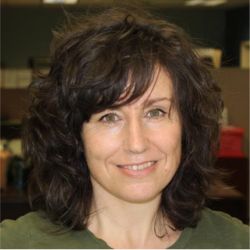
With over ten years in Business Development within the solar industry, several of which have been in a core role with Solar Energy Services, Inc. (SES, a commercial solar developer), Lisa Walsh’s role has developed into all aspects of originating, analyzing, and pre-qualifying prospective residential and commercial solar interests. This includes site feasibility studies, budgetary costs analysis, project financial planning and contract execution. Lisa’s role also extends into post-sale project management and oversight to insure a smooth, turnkey project.
Contact Lisa at:
443-253-6941 Direct
410-923-6090 x304
www.solarsaves.net
About Furbish
Furbish is a living systems company that develops innovative technologies for the built environment. All Furbish systems are designed for easy installation with simple detailing, few components, and limited material. They offer ongoing, corrective maintenance, and restoration services for vegetated systems, including a full coverage guarantee.
 Greenroofs.comConnecting the Planet + Living Architecture
Greenroofs.comConnecting the Planet + Living Architecture
